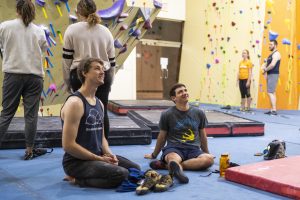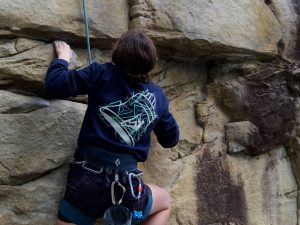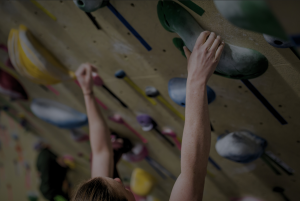How Do We Train?
In Rock Climbing Training (Part 1), we gave you the concrete idea of what and why we need to train. Now we can begin to look at how we train. In Part 2, we will discuss the foundational principles of training fitness, and how we can begin to adapt them for climbing.
The Overload Principle
No matter what sport you are training for: running climbing, swimming, weight-lifting, or what physical ability you are trying to improve: strength power, endurance, if you ignore the overload principle your gains will be unreliable, meager or just plain non-existent.
Simply put the overload principle expresses the biological reality that in order to make fitness gains in a particular group of muscles, you must push those muscles until they fail.
When building strength, this means repeating an exercise under a particular load until you cannot do another repetition. When building endurance, it means moving a certain distance, at a particular pace, until you are too tired to continue.
Biological Processes
The biological processes that underly this principle are complex, fascinating and not completely understood. In broad strokes, the idea is that when you push your body to failure in a given task, it will not merely try to repair any damage you may have done. Instead, it will aim to reinforce and improve the systems involved in that task. It will increase your reserves for the next time you engage in that activity after a period of rest.
In the case of strength training, pushing your muscles to the point of failure does actual damage, snapping muscle fibers and damaging connective tissue. Your body’s response to this is to build more muscle than you need at that load. This will result less damage the next time you strength train.
For endurance, climbing until failure stresses the biological factories that produce, store and transfer energy to your muscles. The overload principle ensures that, after such activity, those factories increase their capacity. This provides more energy the next time you climb or train.
The Aim
The overload principle underlies all fitness training. Put simply, it implies that our aim, when trying to improve our physiological abilities, is to perform workouts that push our muscles to failure, then take enough rest to let our body build a stronger system for the next climbing session.
A Word of Caution
Pushing to failure is necessary; pushing beyond it is risky. The evidence from decades of research, in many sports, is that our bodies are very sensitive to failures of strength and endurance, not to mention somewhat particular about how it’s done. In practical terms, this means that gains are muscle-specific and you don’t need much.
Gains are Muscle-Specific
Muscle-specific is also called locally specific. Doing a bench press until failure will increase the strength of your triceps and pecs, but not your biceps or forearms. And running laps on the track will increase the endurance in your calves and quads, but not your shoulders.
You Don’t Need Much
It takes relatively few failures (if done properly), in order to trigger improvement. In other words, doing 1-3 short sets of an exercise per workout will typically lead to as great, or greater, gains than double or three times that number.
The reason for this is that all workouts do damage. Damage is to the muscles, to connective tissue, and even to cartilage and bone. The body, however, has limited resources at its disposal to repair that damage.
As a result, our bodies are optimized to repair small amounts of damage relatively quickly but will easily become overwhelmed if damage is extensive or widespread.
Be Conservative
So, when using the overload principle it is important to be conservative. We want, in an ideal world, to only overload a particular system just enough to trigger the desired response. Any more than that and we risk overwhelming our repair mechanisms. This will not only impair our ability to improve but can even prevent our body from repairing the damage our training has done.
Resting is Key to Improvement
You improve while you rest, not while you train.
The overload principle is based on the fact that, after a system is damaged or stressed, the body will rebuild it better than before. Training does the damage that triggers this response; but resting is what allows the body to effect its repairs.
Without a sufficient amount of rest, resuming training will cause more damage than the body can repair. It leads to not just a failure to improve (which is bad enough), but actual negative progress lowering your abilities rather than improving them.
This sort of negative overall progress caused by insufficient rest is referred to as over-training. It is not only the most common training mistake (for both athletes and coaches), it is also the most common cause of repetitive stress injuries.
All material is reprinted with the permission of the author. Copyright 2022 David H. Rowland. All rights reserved.









